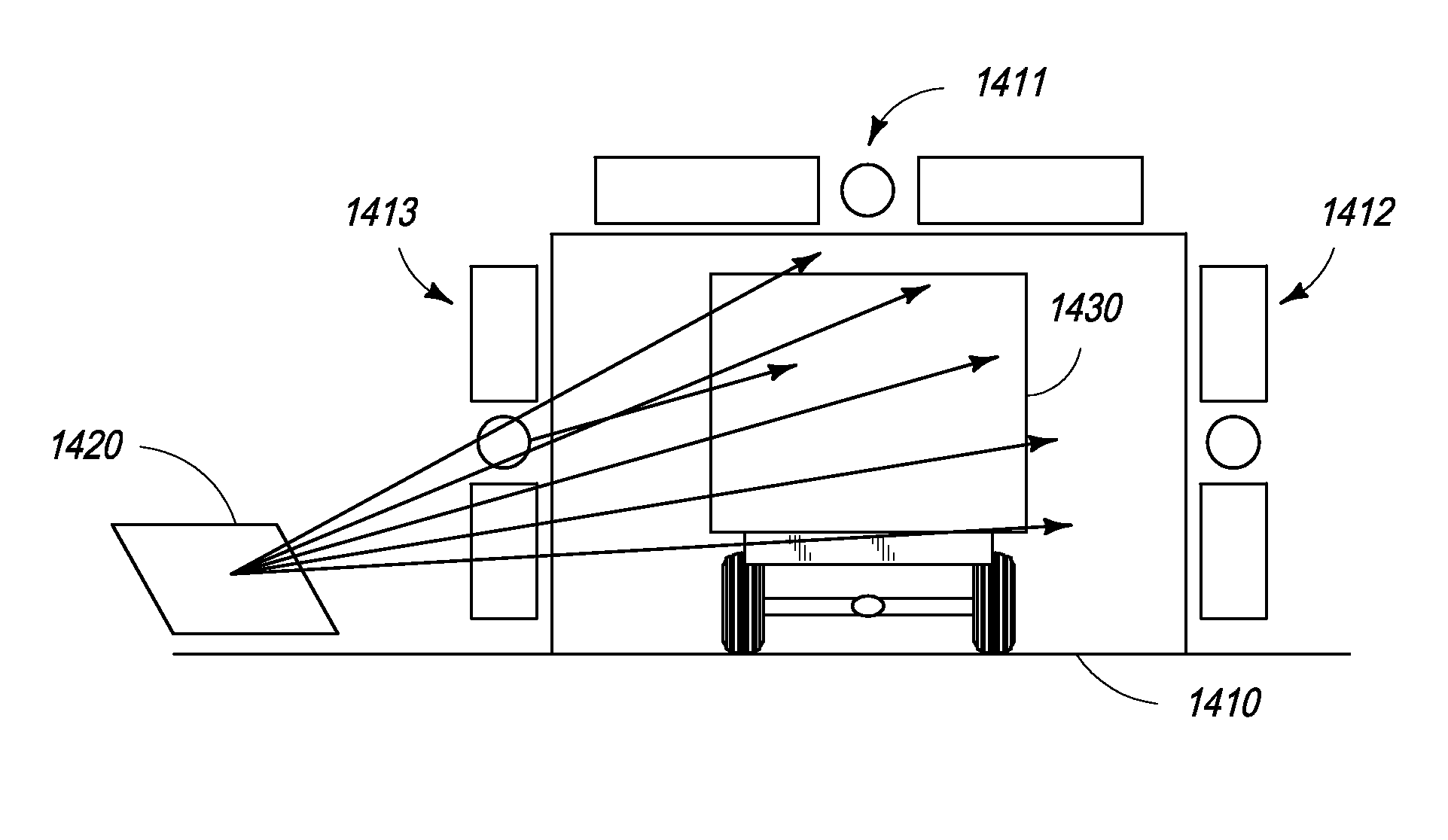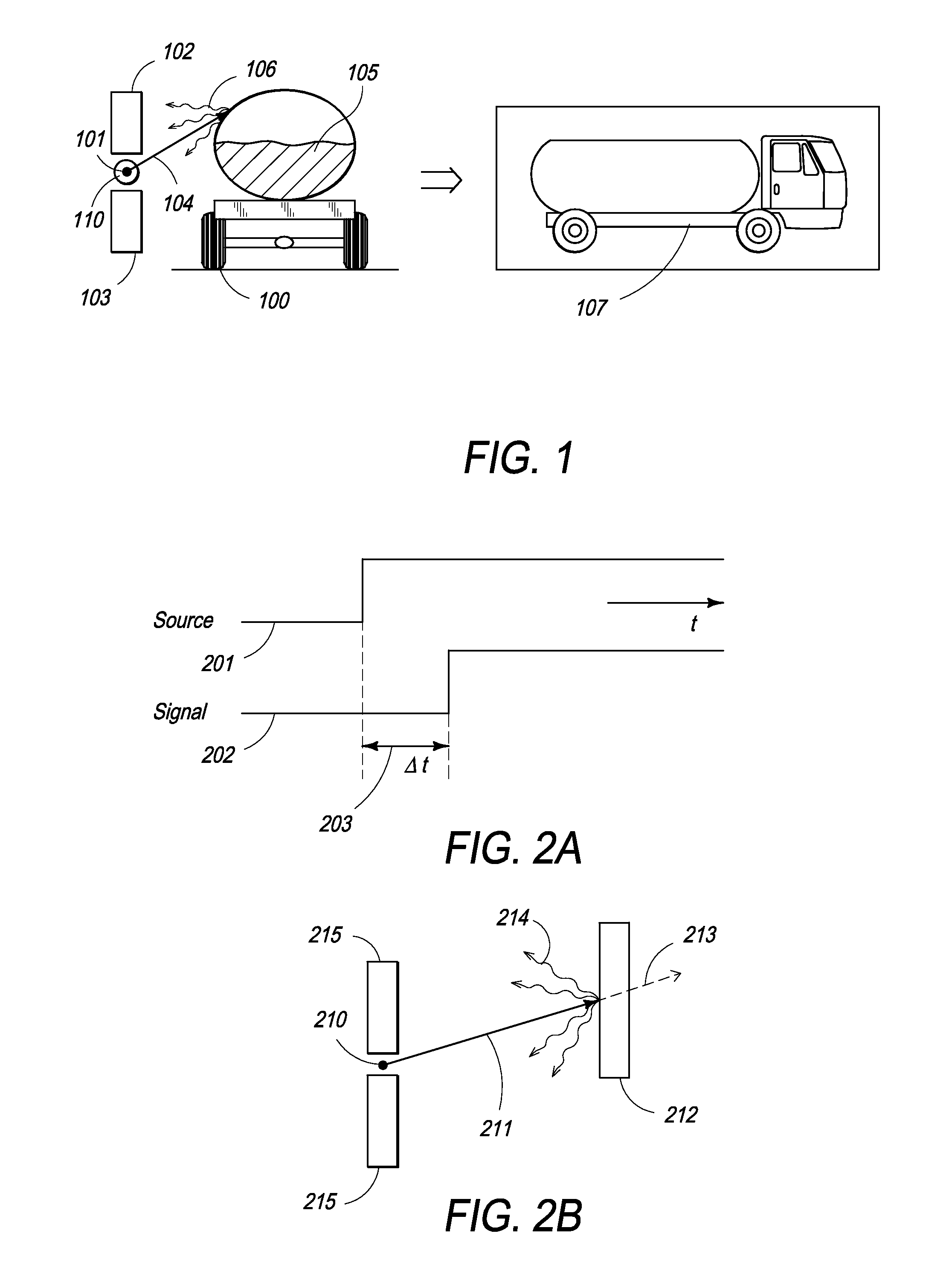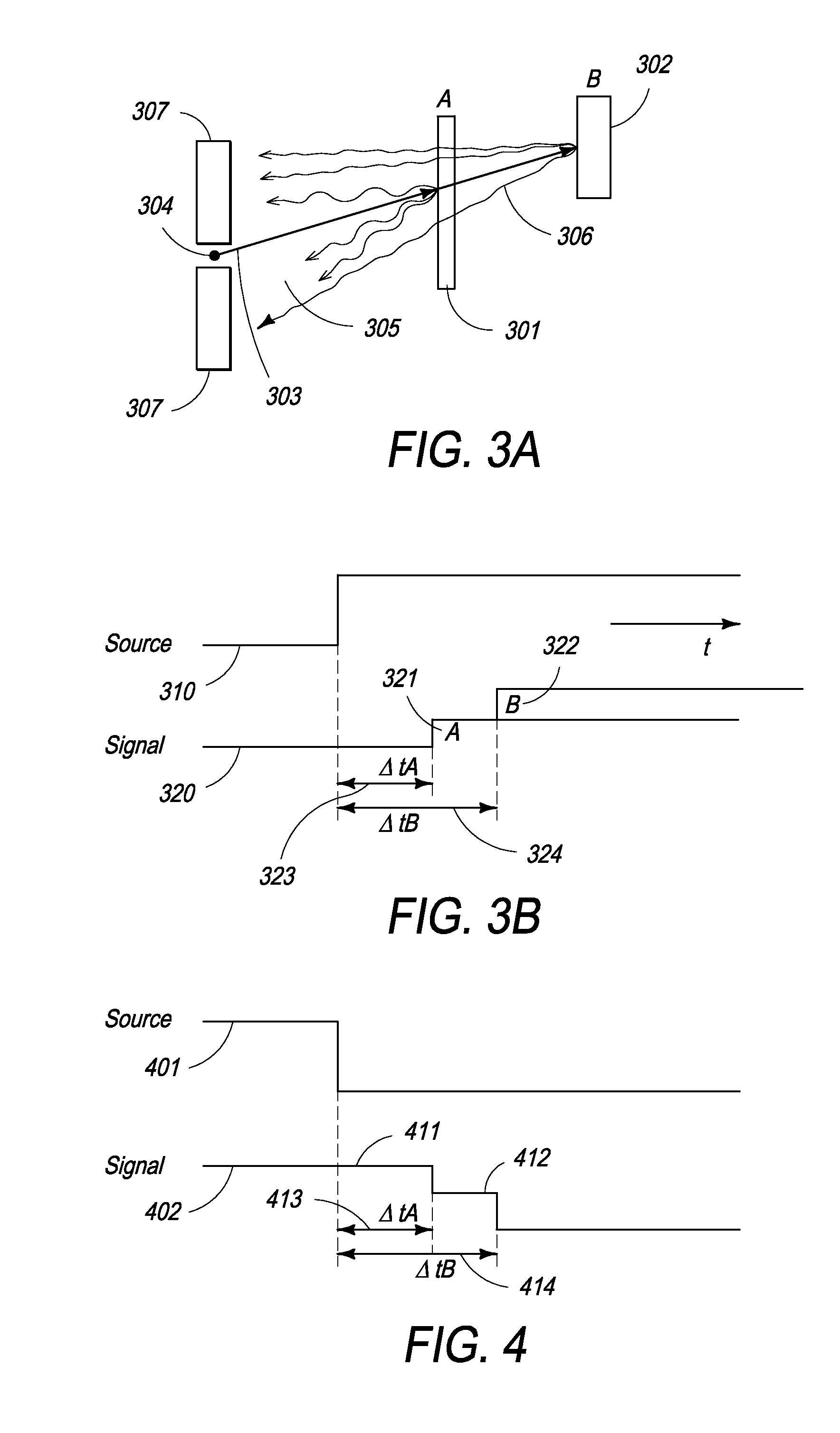Time of flight backscatter imaging system
a backscatter imaging and time-of-flight technology, applied in material analysis using wave/particle radiation, instruments, nuclear engineering, etc., can solve the problem of not being as well suited to scanning aircraft or even cars
- Summary
- Abstract
- Description
- Claims
- Application Information
AI Technical Summary
Benefits of technology
Problems solved by technology
Method used
Image
Examples
Embodiment Construction
[0040]The present invention is a time of flight backscatter system which uses the finite velocity of the X-ray signal to determine the distance from the X-ray source to the surface of the object such that the surface profile of the object may be determined. The system of present invention provides an accurate spatial representation of backscattering from the object to be scanned and eliminates the assumption of straight sided objects on which conventional X-ray backscatter imaging systems are based. Knowledge of the surface profile provides a further inspection result which may be used to verify the integrity of the object under inspection.
[0041]Although one embodiment of the present invention is described with reference to X-ray scanning, one of ordinary skill in the art would appreciate that object screening may be performed using any available radiation imaging technique such as, but not limited to X-ray scattering, infrared imaging, millimeterwave imaging, RF imaging, radar imag...
PUM
| Property | Measurement | Unit |
|---|---|---|
| distance | aaaaa | aaaaa |
| distance | aaaaa | aaaaa |
| off time | aaaaa | aaaaa |
Abstract
Description
Claims
Application Information
 Login to View More
Login to View More - R&D
- Intellectual Property
- Life Sciences
- Materials
- Tech Scout
- Unparalleled Data Quality
- Higher Quality Content
- 60% Fewer Hallucinations
Browse by: Latest US Patents, China's latest patents, Technical Efficacy Thesaurus, Application Domain, Technology Topic, Popular Technical Reports.
© 2025 PatSnap. All rights reserved.Legal|Privacy policy|Modern Slavery Act Transparency Statement|Sitemap|About US| Contact US: help@patsnap.com



